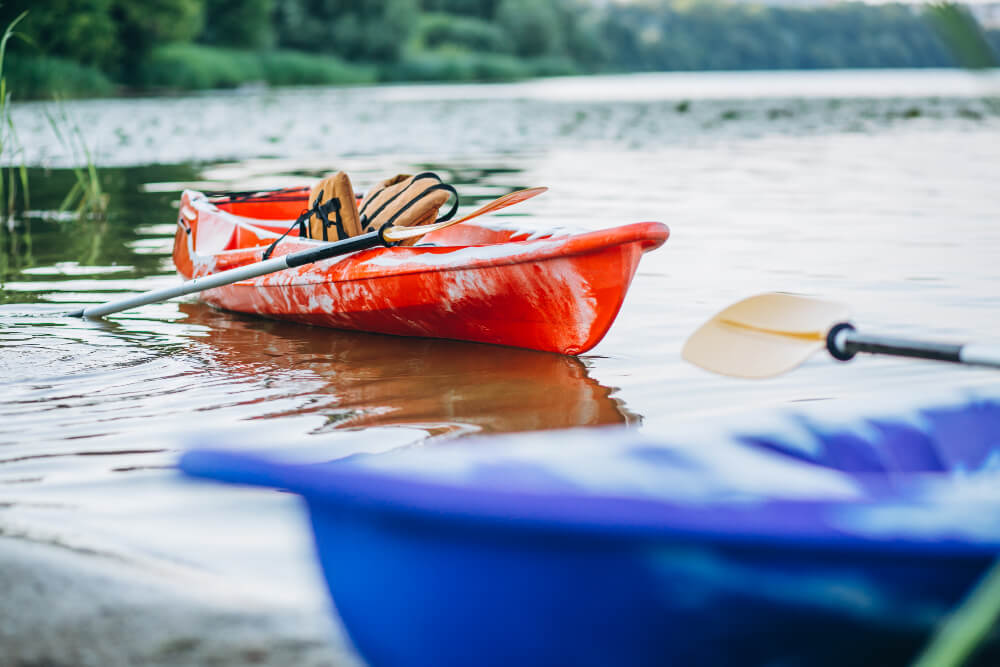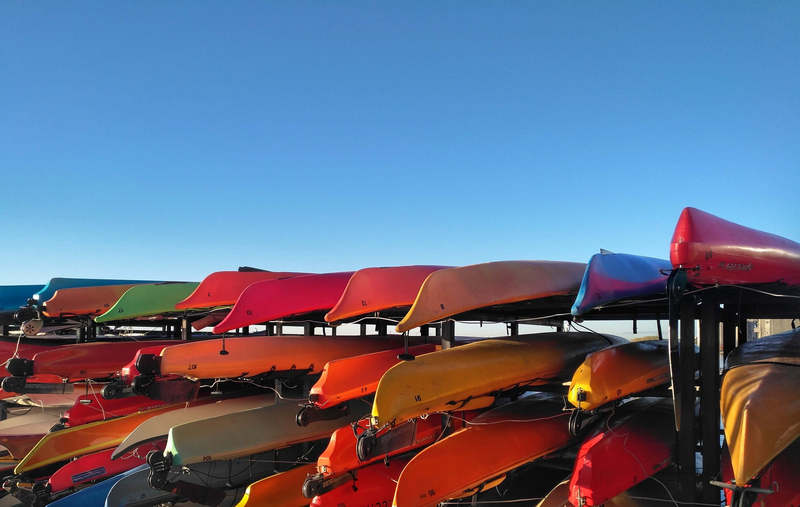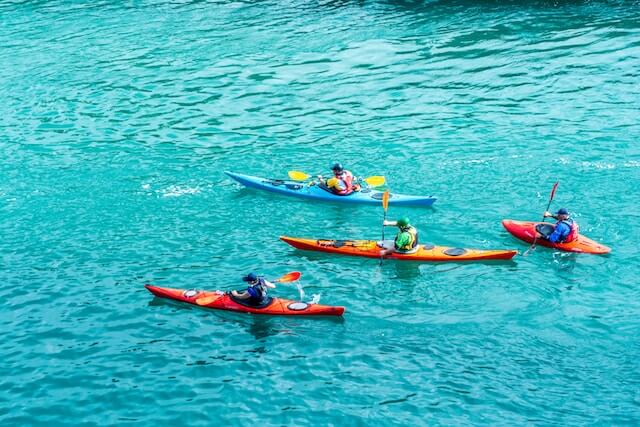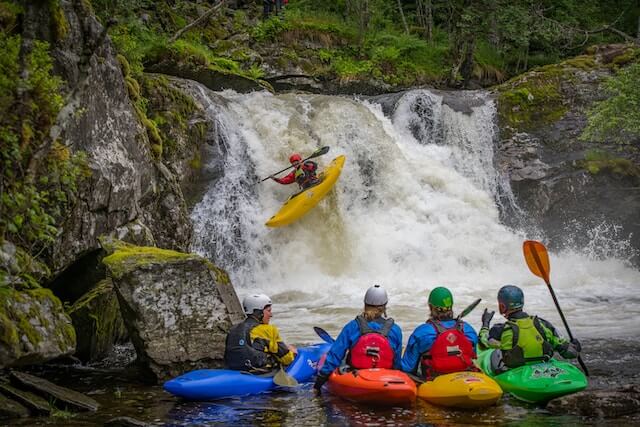Paddling Through Time: An In-depth Look into the History of Kayaking

Origin and Early Uses of Kayaks
The story of kayaking starts in the vast icy landscapes of the Arctic. Let’s paddle through the misty waters of history and see how it evolved from an essential tool for survival into a popular recreational sport.
The kayak’s birth dates back thousands of years, with the Inuit, Aleut, and Yupik people being its first known creators. The word ‘kayak’ originates from the Greenlandic word ‘qajaq,’ which literally translates to ‘hunter’s boat.’ These ancient watercraft were originally constructed using driftwood or whalebone and wrapped in tightly-stretched animal skins. Kayaks were indispensable tools for these Arctic dwellers, serving multiple purposes such as hunting, fishing, and transportation across the icy and often treacherous waters.
- Early Design and Construction: Early kayaks were custom-built according to the measurements of their intended user. They were narrow, lightweight, and streamlined to easily navigate through the ice-laden Arctic waters. The unique design of the ‘cockpit’ – a covered deck with a small opening – offered protection against the icy waters and enabled the user to roll the kayak upright if it capsized.
- Influence on Culture: Kayaking wasn’t just a mere survival tool for these Arctic people; it was an integral part of their culture. From a young age, boys were taught the art of kayaking, which was considered a rite of passage into manhood.
Evolution and Modernization of Kayaks
The evolution and modernization of kayaks began when Europeans discovered them in the 17th century. It’s fascinating how these humble boats transformed through time to meet different needs and environments.
- European Adoption and Adaptation: European explorers and traders, notably the Russians and the British, were impressed by the kayak’s design and began adapting it for their own uses. Kayaks started to gain popularity as recreational boats in the late 19th century, primarily in Britain and Germany. This marked the beginning of kayaking as a sport.
- Design Innovations: The design of kayaks started to evolve in response to the various needs of the users. For instance, the British developed the ‘baidarka,’ a type of kayak with two or three holes, to carry more passengers or cargo.
- Material Changes: The materials used in kayak construction also started to change over time. From the original wood and animal skin construction, kayaks transitioned to canvas and later to fiberglass in the 1950s. With the advent of plastics in the 1980s, the mass production of cheaper and more durable kayaks became possible.
- Popularization of Kayaking as a Sport: Kayaking officially became a part of the Olympic Games in 1936. This significantly boosted its global recognition and popularity, leading to the development of various types of kayaks designed for specific sporting events such as sprint, slalom, and whitewater kayaking.
|
Period |
Notable Changes |
|---|---|
|
17th Century |
European discovery and adoption |
|
Late 19th Century |
Began to gain popularity as recreational boats |
|
1950s |
Introduction of fiberglass kayaks |
|
1980s |
Mass production of plastic kayaks |
|
1936 |
Included in the Olympic Games |
Major Types of Kayaks Today
As kayaking branched out into different water sports and recreational activities, various types of kayaks emerged. Each type has specific features and designs catering to its intended use. Here are some of the most popular types of kayaks today.
- Sea Kayaks: These are designed for paddling on open waters of seas, bays, and oceans. They are generally longer and have a higher cargo capacity, making them ideal for long-distance trips and expeditions.
- Whitewater Kayaks: Specifically designed for navigating through rapid rivers, whitewater kayaks are shorter, enabling quick and sharp turns. They are usually made of high-impact-resistant plastics to withstand the rough conditions.
- Recreational Kayaks: These are designed for casual paddlers interested in leisurely activities on calm waters. They are typically wide and stable, and often come with comfort features such as padded seats.
- Racing Kayaks (Sprint and Slalom): These are designed for speed and agility in racing events. Sprint kayaks are long and narrow for maximum speed on calm waters, while slalom kayaks are more maneuverable, designed for navigating through a series of gates in rapid waters.
- Fishing Kayaks: As the name suggests, these are outfitted for fishing, often equipped with features such as rod holders, tackle boxes, and sometimes even fish-finding equipment.
In conclusion, kayaking has traveled a fascinating journey, from the icy landscapes of the Arctic to the diverse waters of the modern world. As a tool, a sport, and a means of connecting with nature, kayaking has cemented its place in history and continues to evolve, offering ever-new adventures to those willing to pick up a paddle and explore. Through understanding its rich history and appreciating the craftsmanship that goes into each kayak design, we can truly value the experience it provides us today.


